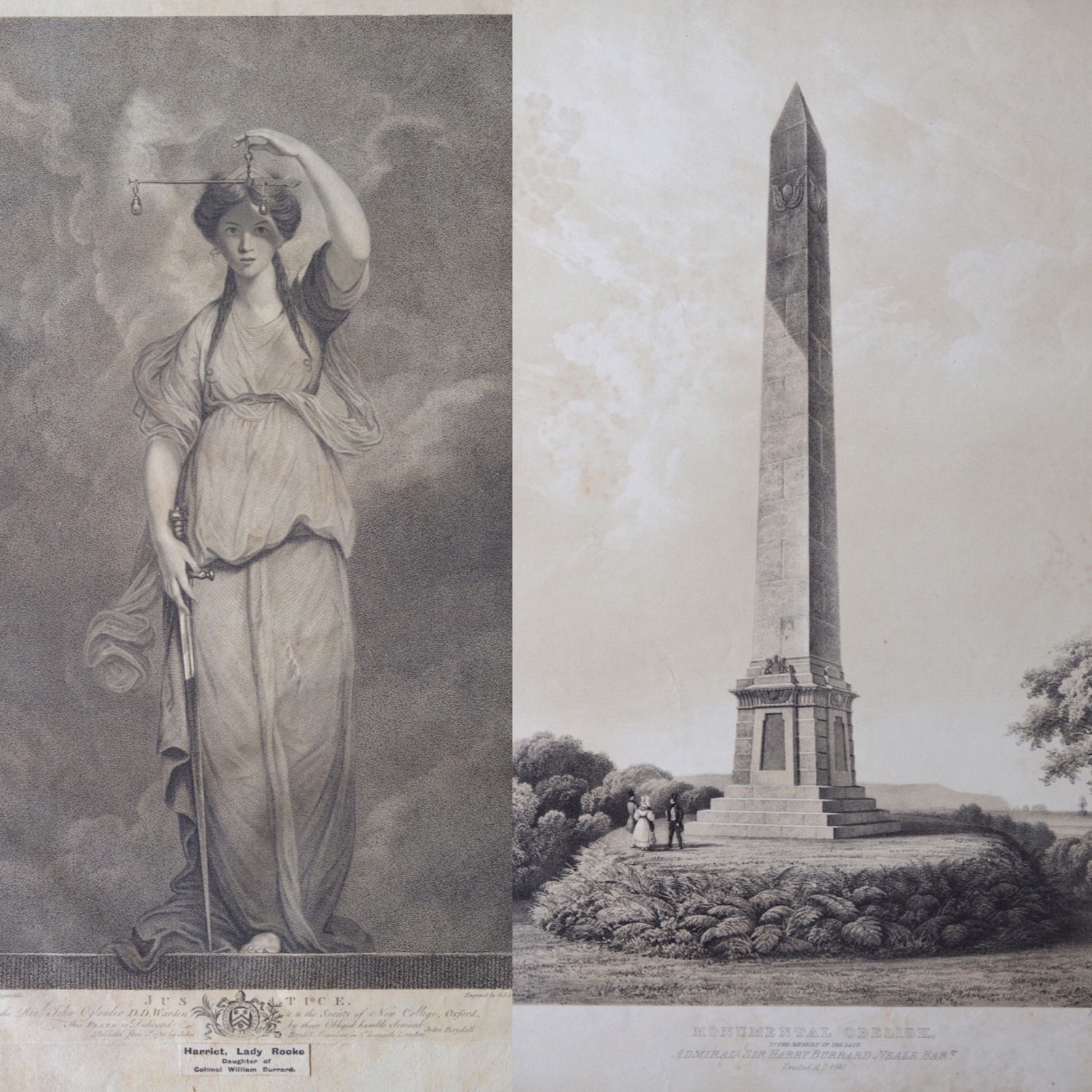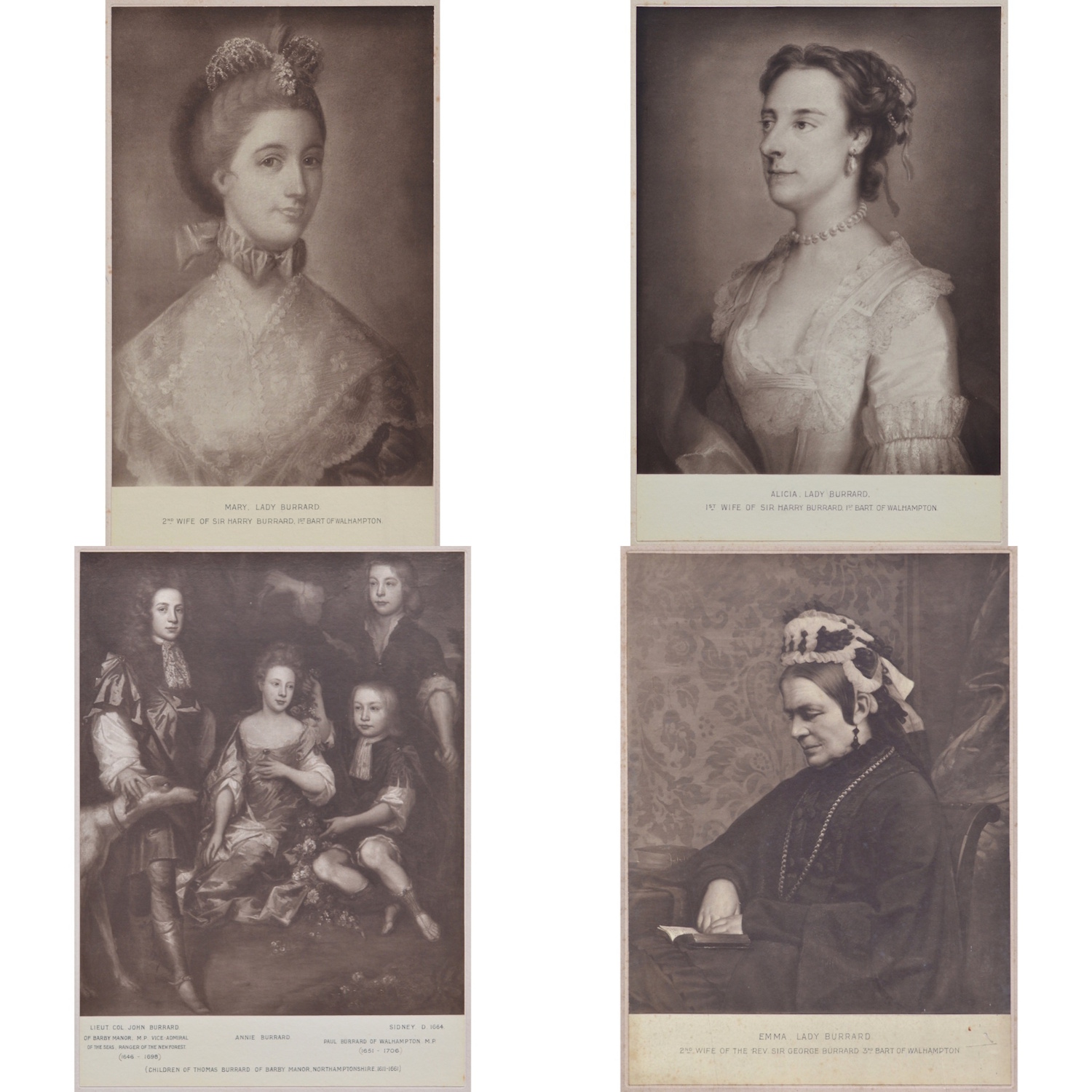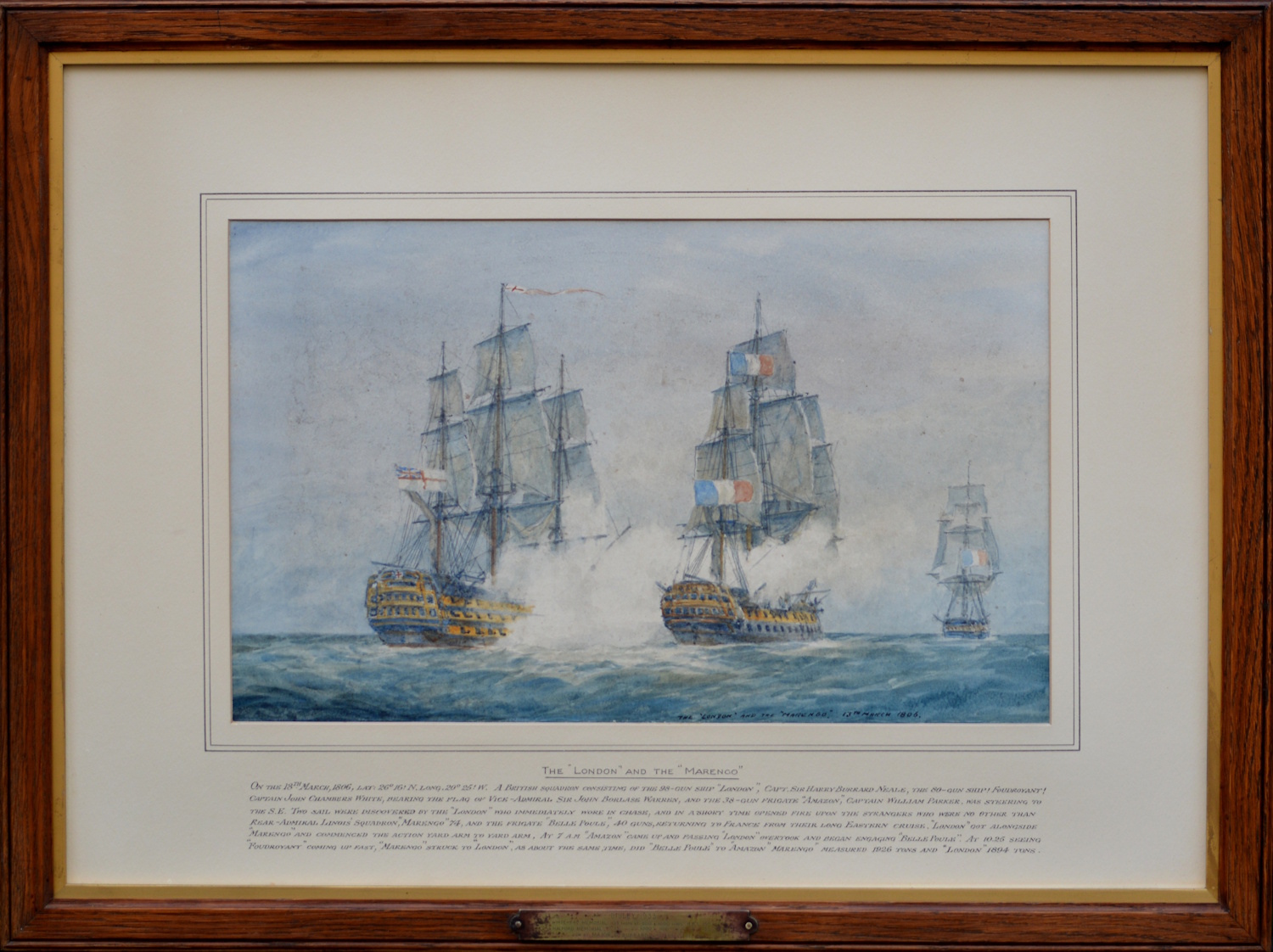Burrard, Admiral Sir Charles (1793-1870)
Charles Burrard was born into a military family in 1793, third in line to inherit the baronetcy of Lymington. He joined the Royal Navy at the age of 11 , in 1805. By 1806 he was aboard HMS London as a Midshipman. This was during the Napoleonic Wars, months after the Battle of Trafalgar. In the morning darkness of the 13th March, French commerce raiders mistook the ships of his squadron for merchantmen. Before the French surrender, 10 men had been killed and 22 wounded aboard HMS London during hours of thunderous gunfire.
Shortly afterwards, Charles was transferred to HMS Victory. In January 1809, the Victory escorted transport ships to La Coruña, to evacuate British troops following their desperate retreat to the coast of Northern Spain. Charles’ eldest brother was ashore, serving as Aide de Camp to Lieutenant-General Sir John Moore. During the battle to defend the port and the possibility of evacuation, Charles’ brother was killed. It is likely that Charles was in the harbour at the time.
That October, his surviving older brother (also a Midshipman in the Navy) was drowned after his boat capsized near Weymouth. Charles was now unexpectedly first in line to inherit, aged about 16, having lost his older brothers. As the eldest son of a Baronet, he was entitled to a knighthood. Sir Charles was promoted to Lieutenant after three years and served in actions around the Mediterranean.
Sir Charles’ father died in 1813, apparently from a heart broken by the news of his other son’s death at the Siege of San Sebastian. Charles was now 2nd Baronet Lymington. The following years saw his first commands, and the end of the Napoleonic Wars. He rose through the ranks of the Navy and was often in the Mediterranean. There he met his future wife, Louisa Lushington, daughter of the British Consul-General in Naples. They married in 1826, returning to England in 1827.
Sir Charles was then pensioned out of the Navy aged 34, as a ‘Superannuated Captain’. A naval officer promoted to Captain was entitled to lifelong promotion in strict order of seniority, regardless of functional demand for higher-ranking officers. Sir Charles Burrard was promoted for the rest of his life, eventually becoming an Admiral.
He spent the rest of his life in and around the New Forest raising a large family, though he was ultimately the last Baronet Lymington. He and his wife likely helped teach their children to paint and draw. They dedicated these decades of peace to the Church, and the creation of an extraordinary painted archive of rural nineteenth century Hampshire.
His Paintings
Sir Charles was a prolific artist and has left substantial numbers of his watercolours and sketches, all of which appear to be in private hands. His marine paintings, of scenes during the French wars, may have been done partly from memory or from sketches made at the time.
In retirement, the admiral took to landscape painting, making extremely detailed records of buildings and their settings from remote barns to great country houses. He was particularly fond of the woodlands of the New Forest and his paintings of them probably comprise the greater part of his work which survives. Sir Charles was not good at people and animals, so that he normally confined them to minor or distant elements in most of his paintings.
His Early Life
Admiral Sir Charles Burrard, second and last Baronet of Lymington, was a member of the Wallhampton (Lymington) family which had controlled the borough for generations, although his title was separate from that of the main branch of the family. His naval career commenced at the time of the wars with France. He was a midshipman on HMS Victory at one stage and later had his own commands under his cousin, Sir Harry Burrard Neale. He was involved in numerous actions, including the suppression of pirates. He appears to have retired from the Navy in about 1825, settling in Lyndhurst, Hampshire, in the New Forest, where his family eventually occupied Holmfield, then a Crown property, on the eastern side of the village.
His Family
Sir Charles married Louisa Lushington, daughter of Sir Henry Lushington of Harpenden in Hertfordshire and had six daughters, some of whose descendants remain in the New Forest to this day. Because there was no male heir, the title lapsed with Sir Charles’s death in 1870. He is buried, with his wife, close to the west door of Lyndhurst church, but his gravestone was destroyed several years ago. The church was built for his son-in-law, the Rev. William Henry Lucas who married Alice Burrard and was the clergyman in charge of Lyndhurst before leaving to become rector of Sopley in 1866. The north porch is dedicated to Sir Charles’s memory.
Showing all 3 results


